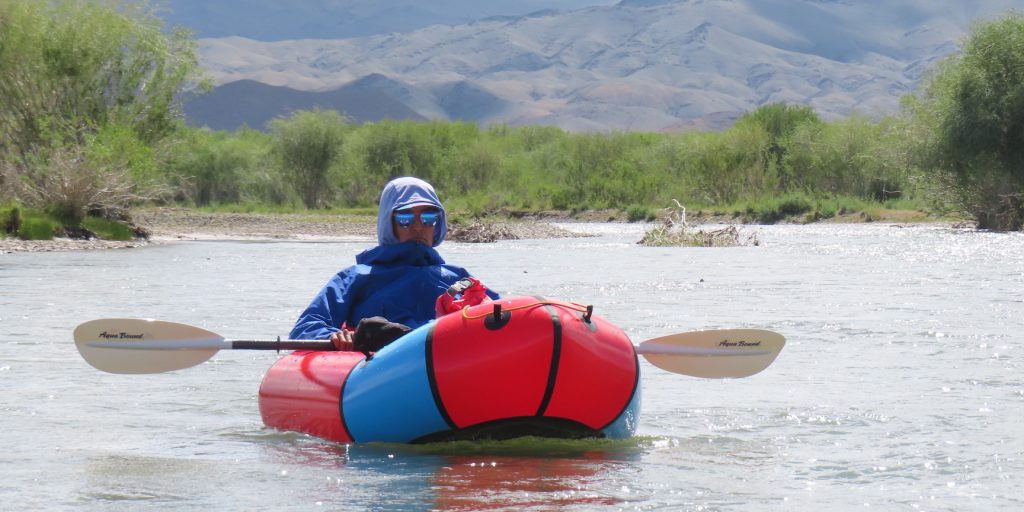
Colleen and I brought our Alpacka brand packrafts to Mongolia with intent to explore the rivers that surround the village of Sagsai, and beyond. And were not disappointed!
Sagsai, Mongolia is uniquely located at the confluence of three rivers: the Turgen, Sagsai, and much larger Hofd. From what we gathered through a Google Earth review, the Turgen starts in the mountains roughly 40 km southeast of town. The Sagsai is a much more formidable river starting at the base of the Altai mountains to the southwest. The Hofd (one of the longest rivers in Mongolia) is fed by the snow fields and glaciers of the Altai mountains to the west, with waters moving through Dayan Lake and the Khurgan and Khoton Lakes, with the White River as a major tributary feeding directly from the base of Potanin Glacier, the longest in Mongolia.
Most everyone in the town enjoys afternoons and weekends relaxing in the shallow meander of the Turgen, from a splash in ankle deep ripples to leaping from grassy banks to land near a friend who splashes back in return. It is, in many ways, a paradise for kids, playing mostly without supervision, only the goats and sheep watching from shore.
Colleen and I took an afternoon to run the Turgen (last four photos, below) from where it exists the canyon with intent to come back town, but after a half dozen butt-scoots and near miss with a rusty steel bridge just six inches off the water, we packed it up and walked back to our home.
The Sagsai, however, presented a much more impressive run, from the bridge a dozen kilometers southwest of town, crossed by every vehicle headed to the high, summer pastures and the Altai National Park. One of the parents gave us a ride, and then watched curiously as we inflated our boats and prepared for our maiden voyage in Mongolia. While the river presented little more than Class 1 or light Class 2 rapids, the joy was in the complete unknown as we spent more than two hours paddling down the Sagsai until we merged with the much larger Hofd, and then another two hours to the north side of town.
Without a map, beta, or any awareness of what we would experience, we honestly didn’t know what to expect. A review of the horizon across a very flat landscape gave us confidence there wouldn’t be any waterfalls or massive drops. But of equal concern was wire fencing, or braids that would force us to get out and walk. Aside from one brief butt-scoot when the river had split twice, we found our way from bridge to the familiar pastures where the women brought their grazing animals each morning in roughly four hours.
We were pleased to see hawks, geese, and cranes with massive white wings. The banks were a saturated green unlike anything we had seen, to date. Our next paddle would be the Hofd from Sagsai to Ulgii, a commute the locals do in the winter, on the frozen river, in a Toyota Prius.